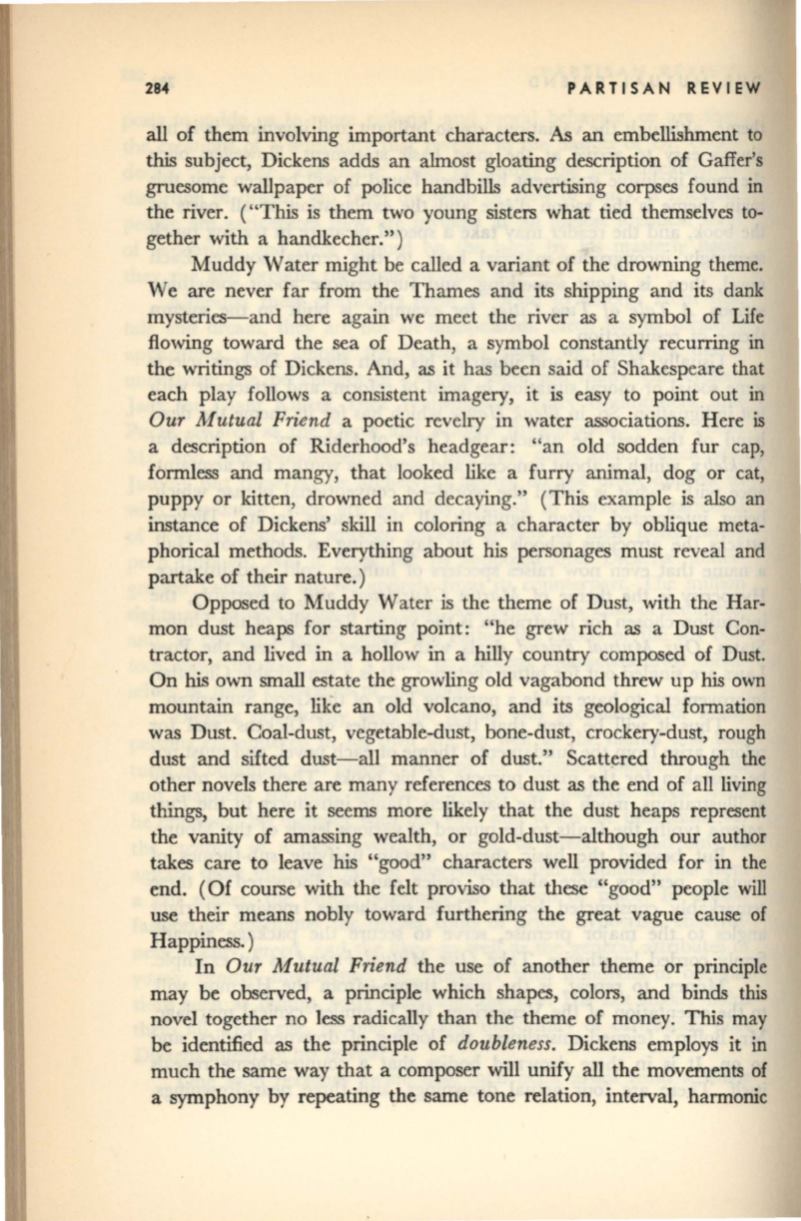
PARTISAN REVIEW
all of them involving important characters.
As
an embellishment to
this
subject, Dickens adds an almost gloating description of Gaffer's
gruesome wallpaper of police handbills advertising corpses found in
the river. ("This is them two young sisters what tied themselves to–
gether with a handkecher.")
Muddy Water might be called a variant of the drowning theme.
We are never far from the Thames and its shipping and its dank
mysteries-and here again we meet the river as a symbol of Life
flowing toward the sea of Death, a symbol constantly recurring in
the writings of Dickens. And, as it has been said of Shakespeare that
each play follows a consistent imagery, it is easy to point out in
Our Mutual Friend
a poetic revelry in water associations. Here
is
a description of Riderhood's headgear: "an old sodden fur cap,
formless and mangy, that looked like a furry animal, dog or cat,
puppy or kitten, drowned and decaying." (This example is also an
instance of Dickens' skill in coloring a character by oblique meta–
phorical methods. Everything about his personages must reveal and
partake of their nature.)
Opposed to Muddy Water is the theme of Dust, with the Har–
mon dust heaps for starting point: "he grew rich as a Dust Con–
tractor, and lived in a hollow in a hilly country composed of Dust.
On
his
own small estate the growling old vagabond threw up his own
mountain range, like an old volcano, and its geological formation
was Dust. Coal-dust, vegetable-dust, bone-dust, crockery-dust, rough
dust and sifted dust-all manner of dust." Scattered through the
other novels there are many references to dust as the end of all living
things, but here it seems more likely that the dust heaps represent
the vanity of amassing wealth, or gold-dust-although our author
takes care to leave his "good" characters well provided for in the
end. (Of course with the felt proviso that these "good" people will
use their means nobly toward furthering the great vague cause of
Happiness. )
In
Our Mutual Friend
the use of another theme or principle
may be observed, a principle which shapes, colors, and binds this
novel together no less radically than the theme of money. This may
be identified as the principle of
doubleness.
Dickens employs it
in
much the same way that a composer will unify all the movements of
a symphony by repeating the same tone relation, interval, harmonic


